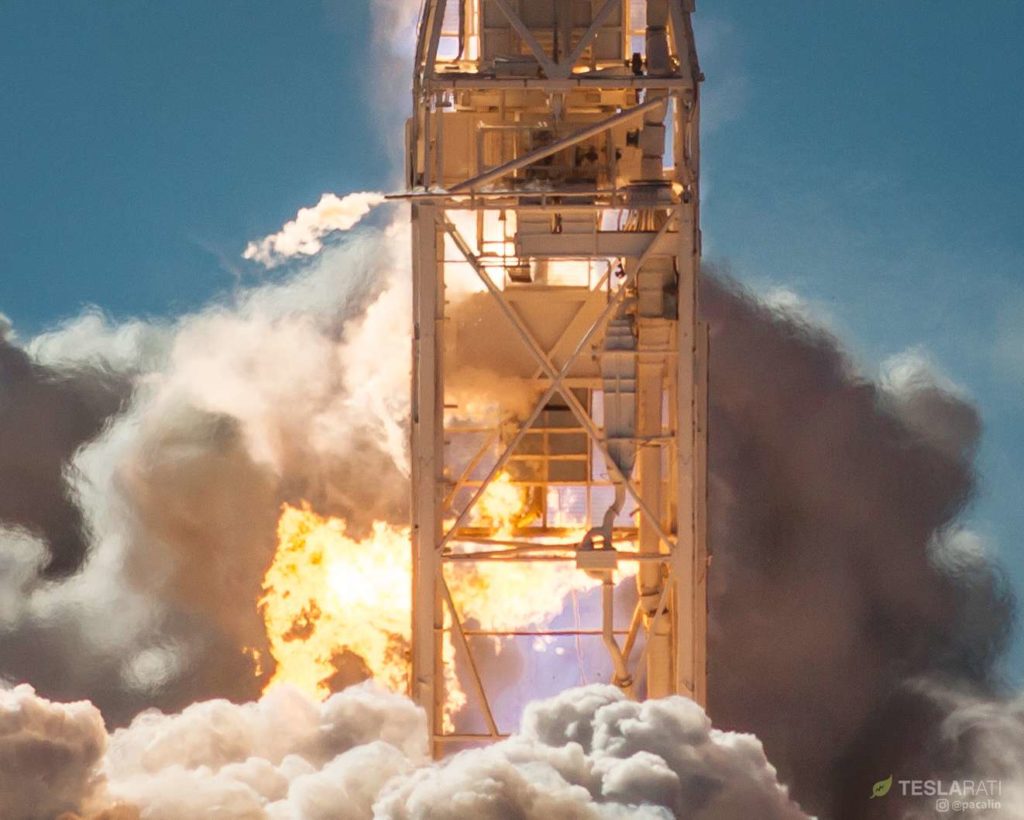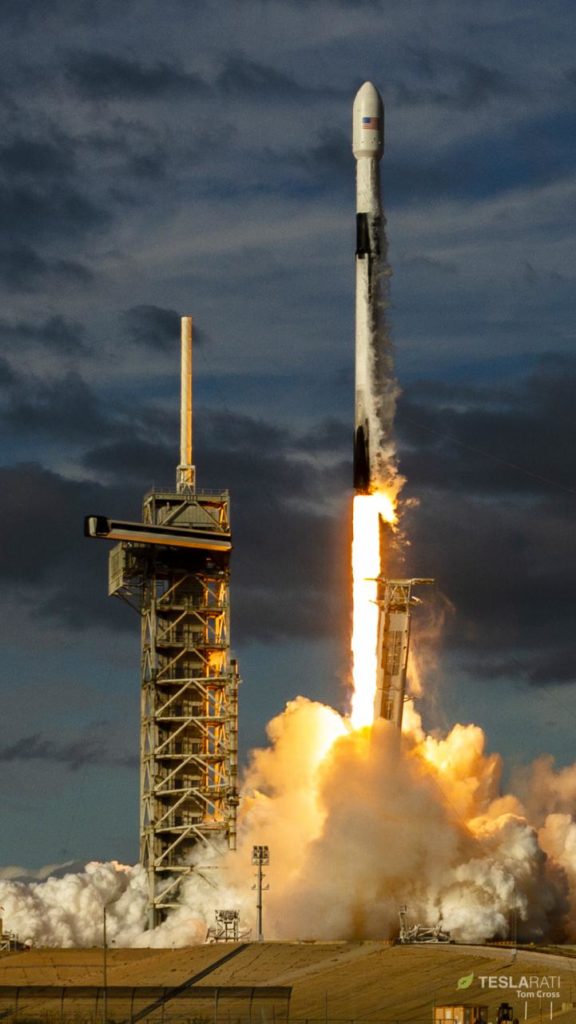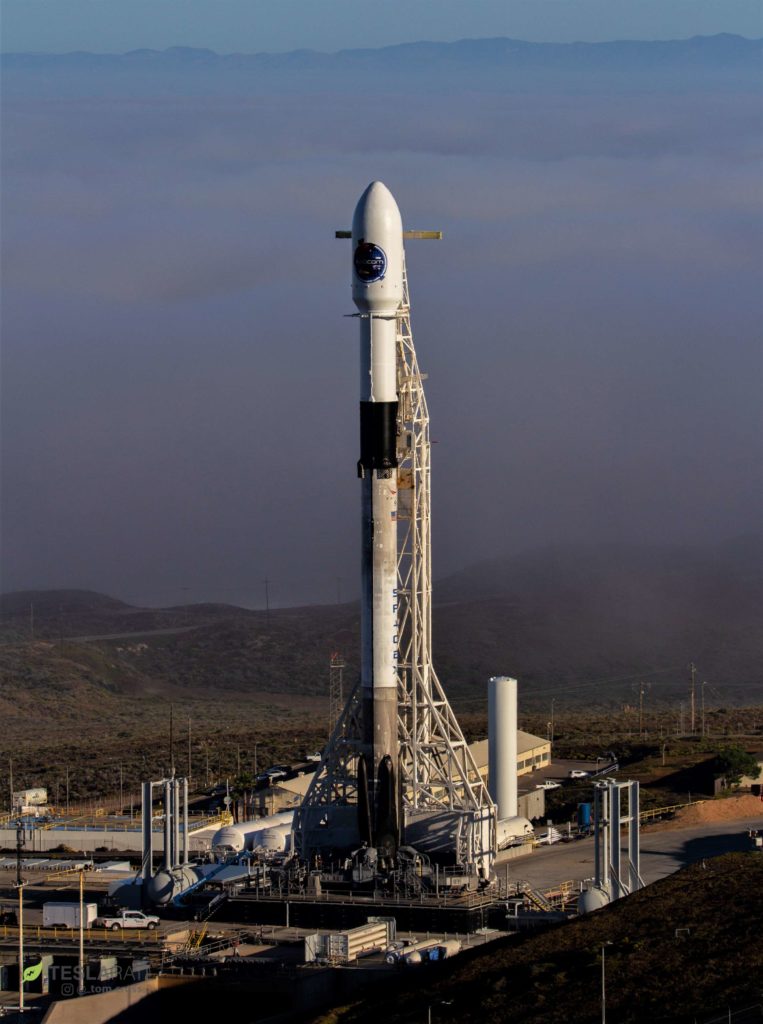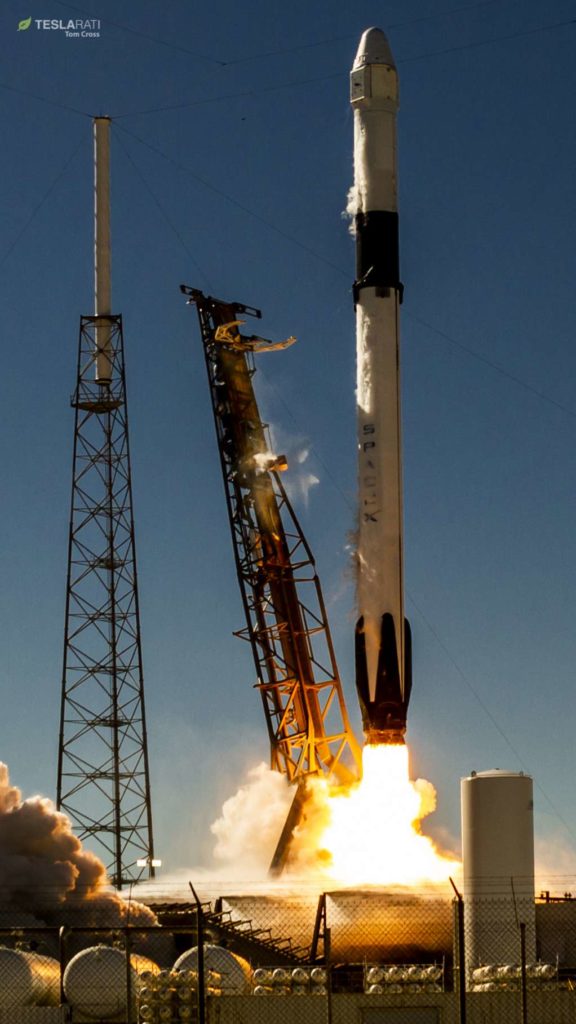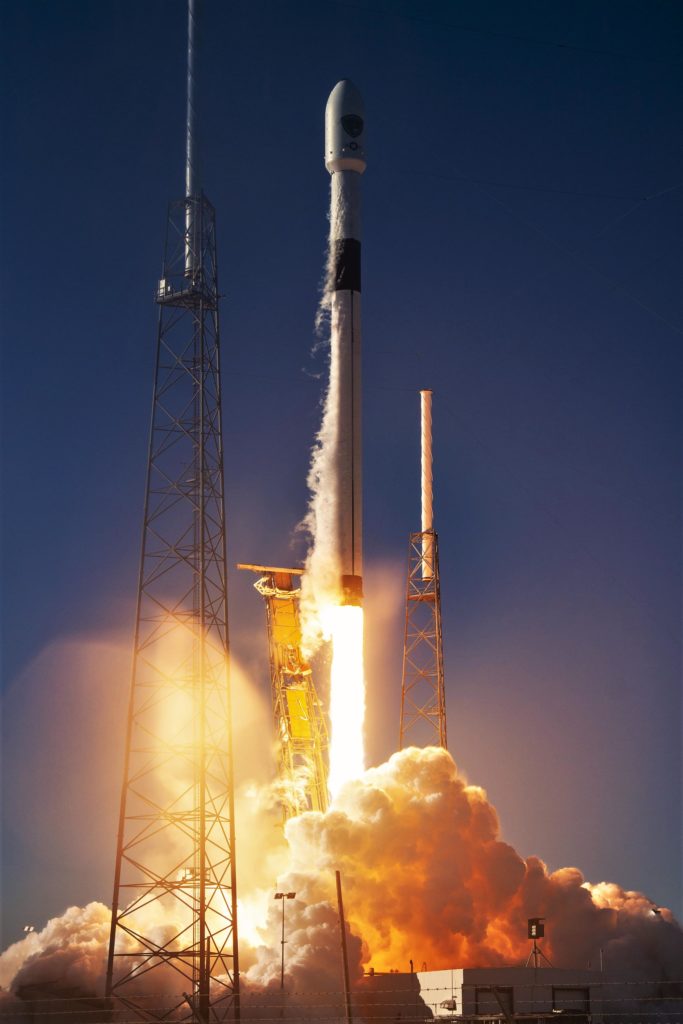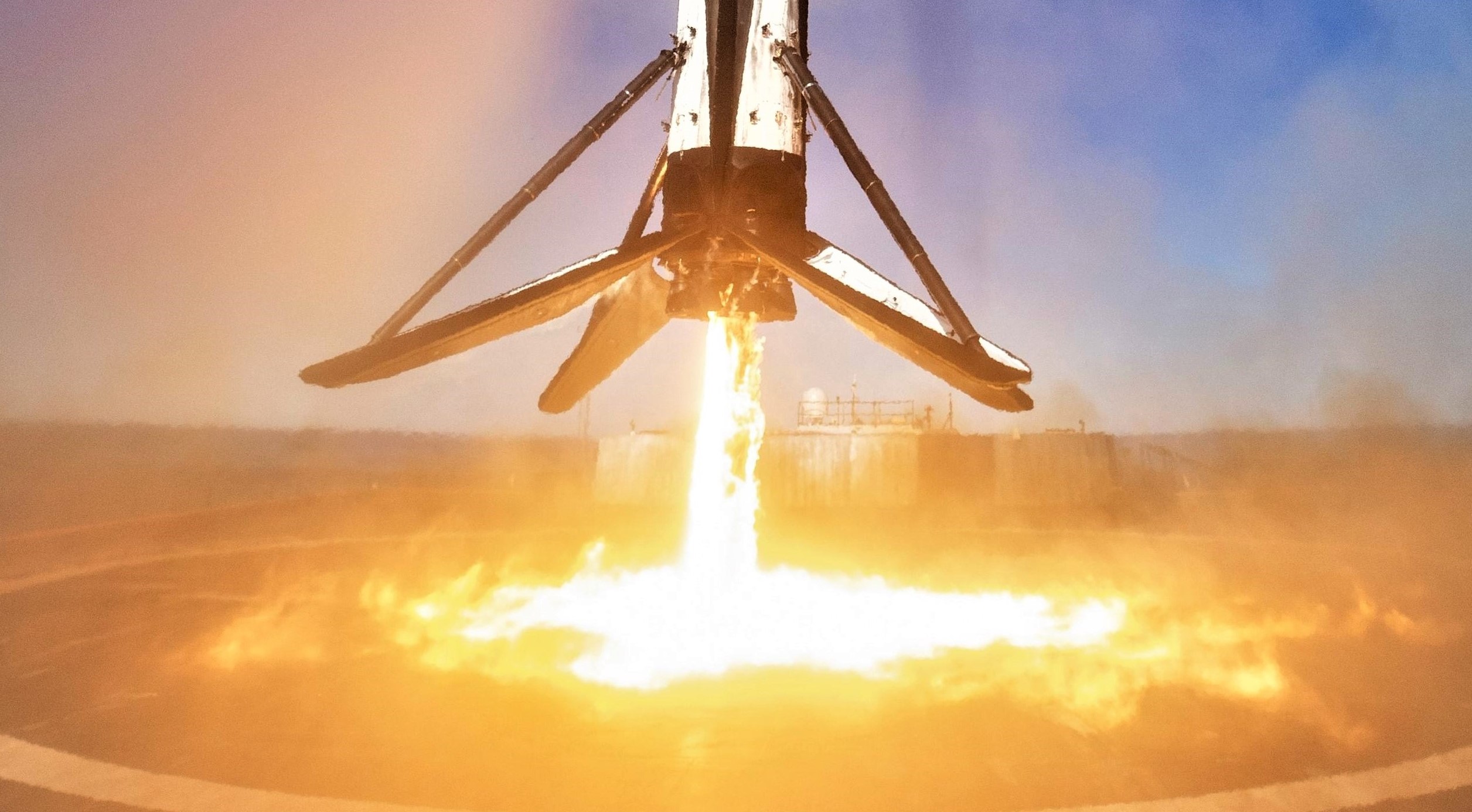
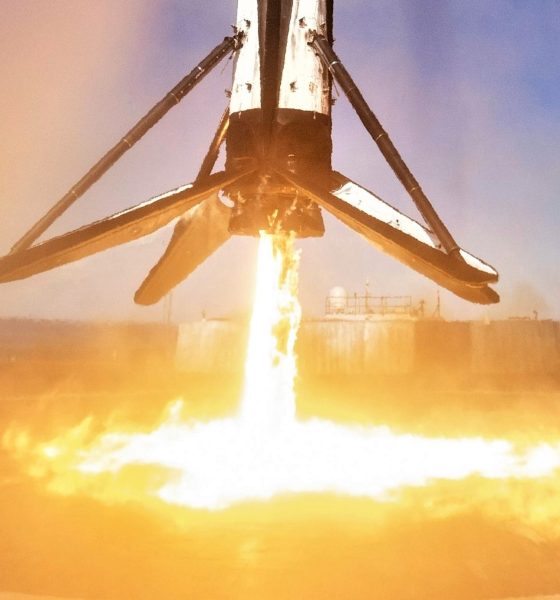
News
SpaceX hints at mystery Falcon 9 missions with record breaking launch target
Speaking at the 2019 Smallsat Symposium, SpaceX Vice President of Commercial Sales Jonathan Hofeller announced that the company will try to break the launch record it set last year in 2019. That record stands at 21 successful missions, while President and COO Gwynne Shotwell stated in a May 2018 interview that she was anticipating 24-28 launches in 2018 and ~18 in 2019.
Ranging from Crew Dragon transporting astronauts and a duo of Falcon Heavy missions to perhaps ten commercial satellite launches, 2019 will undoubtedly be full of major events for SpaceX. However, SpaceX’s publicly-available launch manifest suggests that there will be no more than 18 government and commercial missions ready for the company to place in orbit before 2019 is out, implying that Hofeller may be hinting at launches that are not yet public.
Last May, SpaceX Prez Gwynne Shotwell was projecting 24 to 28 launches for 2018 but more like 18 for 2019. 21+ may be an “aspirational goal,” unless they’re counting Starship Hopper: https://t.co/RDbdPLA2Z7
— Alan Boyle (@b0yle) February 7, 2019
In just the last two years (24 months), SpaceX has successfully launched Falcon 9 and Falcon Heavy an astounding 40 times, averaging approximately one launch every 2.5 weeks. In 2017, SpaceX demolished its own prior cadence record with 18 launches, a record the company’s exceptional workforce summarily proceeded to beat in 2018 with 21 successful missions launched. A vast majority of those 40 missions (27 to be precise) were the result of competitive, commercial contracts that SpaceX has been extremely successful at winning, thanks largely to the nearly unbeatable pricing of Falcon 9 and Heavy.
Much like most other launch providers, SpaceX plays its manifest extremely close to the chest, rarely revealing more than a blanket status update. For example, SpaceX’s website states that it has “has secured over 100 missions to its manifest, representing over $12 billion on contract.” Thanks to the general drought of official manifest information, the closest approximation to a real SpaceX manifest has traditionally been maintained by members of spaceflight fan communities like /r/SpaceX and NASASpaceflight.com, using the best aspects of organized crowdsourcing to create an extremely reliable snapshot of launch contracts scheduled within ~24 months.
However, compared to SpaceX’s claimed manifest of 100+ missions at an average cost per launch of ~$120M (twice Falcon 9’s $62M list price), crowdsourced SpaceX manifests – based on mostly public information – show fewer than 60 possible launch contracts between now and the end of 2024, a majority of which are for the US government (Crew and Cargo Dragon, Air Force GPS launches, and a few NASA spacecraft). Given SpaceX’s confident use of “secured” and “on contract”, the massive gap between public manifests and SpaceX’s claims leaves more than 40 launches almost completely in the dark.
- Falcon 9 B1046 lifts off for the third time with Spaceflight’s SSO-A rideshare mission. (Pauline Acalin)
- Falcon 9 B1047 lifts off from Pad 39A, November 2018. (Tom Cross)
- Falcon 9 B1048 appears out of the fog prior to its second orbital-class launch. (Pauline Acalin)
- Falcon 9 B1050 is seen here just after liftoff. GPS III SV01’s Falcon 9 will feature no grid fins or landing legs. ☹ (Tom Cross)
A Big Falcon Mystery
Hofeller’s Feb. 6th comment is thus just a tiny taste of SpaceX’s potential mystery manifest, indicating that the company has more than 21 payloads to launch in 2019 while public info reveals no more than 17-18 likely to be ready. Where, then, might Hofeller find an extra 4-5 missions that public observers would not normally be aware of?
The simplest answer least reminiscent of a conspiracy theory is Starlink, SpaceX’s global constellation of at least 4425 satellites. While it would be an extraordinary achievement, Reuters reported in October 2018 that CEO Elon Musk had gone as far as firing multiple senior managers of the young satellite program to install new managers with a singleminded goal: begin launching operational Starlink satellites by mid-2019. A little over six months after Musk’s Starlink shake-up, SpaceX has pivoted towards rapidly building and launching around ~1500 first-generation satellites with more conservative capabilities to lower orbits relative to the original Starlink specification.
- One of the first two prototype Starlink satellites separates from Falcon 9’s upper stage, February 2018. (SpaceX)
- SpaceX’s first two Starlink prototype satellites are pictured here before their inaugural Feb. 2018 launch, showing off a utilitarian design. (SpaceX)
SpaceX also received a major Starlink contract from the US Air Force Research Laboratory worth almost $29 million, $19.1M of which was dispersed to SpaceX in October 2018. As of late 2018, the company’s Starlink branch had already pivoted toward ramping up production of the first several batches of operational Starlink satellites. According to a number of employees, SpaceX’s first two Starlink prototype satellites – known as Tintin A and B – were a programmatic success and continue to operate in orbit today after proving out a number of critical Starlink technologies. As such, it’s not out of the question for operational Starlink launches to begin as early as mid-2019, although Musk’s aggressive schedule is likely more than a little overly optimistic.
Assuming Starlink is greeted with a perfect production ramp and the first 10-20 spacecraft make it to orbit in good health by June 2019, it’s at least not inconceivable that a second and third launch could follow, perhaps with a 3-month launch cadence (June/September/December). The chances of this happening are probably about as slim as they come, but it does offer one possible way for SpaceX’s apparent ~18-launch manifest to jump up to 21 or more missions. The next most probable route to 21+ launches involves at least one or two Starlink-specific launches, followed by another one or two launches for a secretive US government customer like the National Reconnaissance Office (NRO).
The top secret Zuma spacecraft could be alive and well doing exactly what it was intended to: https://t.co/bK6x38KyIL
— Tyler Rogoway (@Aviation_Intel) January 12, 2018
In January 2018, SpaceX successfully launched a spacecraft called Zuma with no known customer aside from a generic US military agency. Despite an ambiguous potential failure of the satellite – attributed to a Northrop Grumman deployment mechanism – just days after launch, a variety of anonymous sources indicated that Zuma was just the first in a series of new military satellites with a focus on SpaceX as the primary launch provider. The value of the intensely-secretive program was estimated to be in the billions of dollars, implying a veritable constellation of mystery satellites that could provide SpaceX several additional launch contracts.
Now a little over 12 months distant from Zuma’s bizarre debut, it’s conceivable that the next phase of the secretive satellite program is scheduled sometime in 2019. Ultimately, the general public is unlikely to learn about any potential mystery SpaceX launches until they are imminent, barring comments from executives or sourced leaks making their way into the news. For now, we wait.
Check out Teslarati’s newsletters for prompt updates, on-the-ground perspectives, and unique glimpses of SpaceX’s rocket launch and recovery processes!

News
Tesla FSD fleet is nearing 7 billion total miles, including 2.5 billion city miles
As can be seen on Tesla’s official FSD webpage, vehicles equipped with the system have now navigated over 6.99 billion miles.

Tesla’s Full Self-Driving (Supervised) fleet is closing in on almost 7 billion total miles driven, as per data posted by the company on its official FSD webpage.
These figures hint at the massive scale of data fueling Tesla’s rapid FSD improvements, which have been quite notable as of late.
FSD mileage milestones
As can be seen on Tesla’s official FSD webpage, vehicles equipped with the system have now navigated over 6.99 billion miles. Tesla owner and avid FSD tester Whole Mars Catalog also shared a screenshot indicating that from the nearly 7 billion miles traveled by the FSD fleet, more than 2.5 billion miles were driven inside cities.
City miles are particularly valuable for complex urban scenarios like unprotected turns, pedestrian interactions, and traffic lights. This is also the difference-maker for FSD, as only complex solutions, such as Waymo’s self-driving taxis, operate similarly on inner-city streets. And even then, incidents such as the San Francisco blackouts have proven challenging for sensor-rich vehicles like Waymos.
Tesla’s data edge
Tesla has a number of advantages in the autonomous vehicle sector, one of which is the size of its fleet and the number of vehicles training FSD on real-world roads. Tesla’s nearly 7 billion FSD miles then allow the company to roll out updates that make its vehicles behave like they are being driven by experienced drivers, even if they are operating on their own.
So notable are Tesla’s improvements to FSD that NVIDIA Director of Robotics Jim Fan, after experiencing FSD v14, noted that the system is the first AI that passes what he described as a “Physical Turing Test.”
“Despite knowing exactly how robot learning works, I still find it magical watching the steering wheel turn by itself. First it feels surreal, next it becomes routine. Then, like the smartphone, taking it away actively hurts. This is how humanity gets rewired and glued to god-like technologies,” Fan wrote in a post on X.
News
Tesla starts showing how FSD will change lives in Europe
Local officials tested the system on narrow country roads and were impressed by FSD’s smooth, human-like driving, with some calling the service a game-changer for everyday life in areas that are far from urban centers.

Tesla has launched Europe’s first public shuttle service using Full Self-Driving (Supervised) in the rural Eifelkreis Bitburg-Prüm region of Germany, demonstrating how the technology can restore independence and mobility for people who struggle with limited transport options.
Local officials tested the system on narrow country roads and were impressed by FSD’s smooth, human-like driving, with some calling the service a game-changer for everyday life in areas that are far from urban centers.
Officials see real impact on rural residents
Arzfeld Mayor Johannes Kuhl and District Administrator Andreas Kruppert personally tested the Tesla shuttle service. This allowed them to see just how well FSD navigated winding lanes and rural roads confidently. Kruppert said, “Autonomous driving sounds like science fiction to many, but we simply see here that it works totally well in rural regions too.” Kuhl, for his part, also noted that FSD “feels like a very experienced driver.”
The pilot complements the area’s “Citizen Bus” program, which provides on-demand rides for elderly residents who can no longer drive themselves. Tesla Europe shared a video of a demonstration of the service, highlighting how FSD gives people their freedom back, even in places where public transport is not as prevalent.
What the Ministry for Economic Affairs and Transport says
Rhineland-Palatinate’s Minister Daniela Schmitt supported the project, praising the collaboration that made this “first of its kind in Europe” possible. As per the ministry, the rural rollout for the service shows FSD’s potential beyond major cities, and it delivers tangible benefits like grocery runs, doctor visits, and social connections for isolated residents.
“Reliable and flexible mobility is especially vital in rural areas. With the launch of a shuttle service using self-driving vehicles (FSD supervised) by Tesla in the Eifelkreis Bitburg-Prüm, an innovative pilot project is now getting underway that complements local community bus services. It is the first project of its kind in Europe.
“The result is a real gain for rural mobility: greater accessibility, more flexibility and tangible benefits for everyday life. A strong signal for innovation, cooperation and future-oriented mobility beyond urban centers,” the ministry wrote in a LinkedIn post.
News
Tesla China quietly posts Robotaxi-related job listing
Tesla China is currently seeking a Low Voltage Electrical Engineer to work on circuit board design for the company’s autonomous vehicles.

Tesla has posted a new job listing in Shanghai explicitly tied to its Robotaxi program, fueling speculation that the company is preparing to launch its dedicated autonomous ride-hailing service in China.
As noted in the listing, Tesla China is currently seeking a Low Voltage Electrical Engineer to work on circuit board design for the company’s autonomous vehicles.
Robotaxi-specific role
The listing, which was shared on social media platform X by industry watcher @tslaming, suggested that Tesla China is looking to fill the role urgently. The job listing itself specifically mentions that the person hired for the role will be working on the Low Voltage Hardware team, which would design the circuit boards that would serve as the nervous system of the Robotaxi.
Key tasks for the role, as indicated in the job listing, include collaboration with PCB layout, firmware, mechanical, program management, and validation teams, among other responsibilities. The role is based in Shanghai.
China Robotaxi launch
China represents a massive potential market for robotaxis, with its dense urban centers and supportive policies in select cities. Tesla has limited permission to roll out FSD in the country, though despite this, its vehicles have been hailed as among the best in the market when it comes to autonomous features. So far, at least, it appears that China supports Tesla’s FSD and Robotaxi rollout.
This was hinted at in November, when Tesla brought the Cybercab to the 8th China International Import Expo (CIIE) in Shanghai, marking the first time that the autonomous two-seater was brought to the Asia-Pacific region. The vehicle, despite not having a release date in China, received a significant amount of interest among the event’s attendees.
